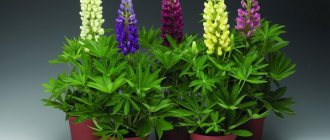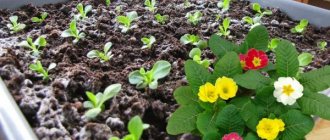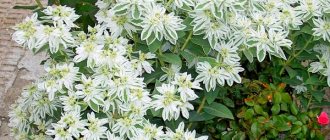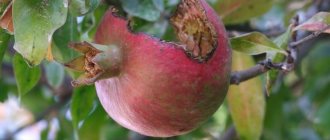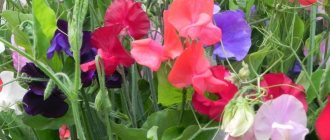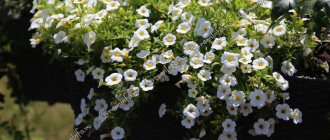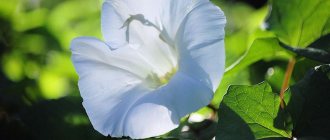Perennial flax, so familiar to most of us, is often relegated to the background when choosing suitable decorative flowers for the garden plot. But in vain. After all, this plant has long been considered a real decoration of any home and its protector. Flax is a completely unpretentious plant, but at the same time capable of blooming with incredible luxurious flowers. By the way, contrary to popular belief, linen does not have to be blue. Today you will learn about all the features of growing perennial blue flax in open ground: planting, care, use in landscape design (photo materials are attached).
Large-flowered flax: description
This is an annual plant with decorative flowers, belonging to the genus Flax from the Flax family. It reaches a height of up to 110 cm, but most often the growth is limited to 30-60 cm. The stem of flax is erect and branched. The leaves are sessile, alternate in arrangement, lanceolate in shape with pointed tips. Bright flowers form an inflorescence corymb, which has a fairly loose structure. The natural habitat is the northwestern part of the African continent (Algeria). Flax was introduced into culture in 1820, and since then it has been actively cultivated as an annual.
Brief description of the genus
There are about 200 species in the flax genus, among which the most interesting for a gardener are low-growing compact bushes up to half a meter high, most of them perennials. Flowers can be of various sizes, from small to large, and the color of the corollas is blue, red-pink and white. The shoots are thin, but very strong, thanks to which the plant retains its shape even in unfavorable weather conditions.
Flax is naturally widespread in Africa and North America and is found in some places in Europe and Asia. In the conditions of the Middle Zone, it is successfully cultivated by flower growers, because flax perceives the conditions of a temperate climate as comfortable.
Grandiflora flax: cultivation
From small seeds, if desired, you can grow a beautiful perennial plant. Flax has an unpretentious character, is resistant to cold, and tolerates even mild frosts. It is preferable to choose sunny, well-lit areas for it. It will grow in any poor garden soil, but preferably without stagnant moisture. In Russia with cold climatic conditions, we recommend choosing large-flowered flax. Growing from seeds is very simple. Germination is almost 100%, and the plant spreads all the way to the taiga zone.
Before planting, the area must be dug up; it is recommended to add humus or compost (3-4 kg per 1 square meter). And also a tablespoon of superphosphate and potassium sulfate. Then mix everything thoroughly and level it with a rake. It is best to water the soil well and leave it for a couple of days, and only then start planting. This can be done in two ways: seedlings or directly into the ground. Choose the one that suits you best.
Flax - characteristics, varieties, planting and cultivation subtleties
Flax is not only an important crop used in the textile and pharmaceutical industries, but also a popular ornamental plant. Let's find out what types of flax exist and what are the features of their cultivation.
Description of the plant
Flax (Linum) is an annual herbaceous plant that serves as raw material for the production of the fabric of the same name. Thanks to its delicate blue flowers, flax is very popular among gardeners and is often used as an ornamental plant.
Characteristics and features of flax seeds or cultivated flax (ordinary):
- Stem. Erect, thin, cylindrical. Height – 0.6-1.5 m. Branches branching in the upper part. It has a pale green color. Has a soft wax coating. Leaves. The layout is economical, spiral. They are 2-3 cm long and 3-4 cm wide. Sharp, protruding, linear or linear-lanceolate forms. Color from green to bluish. Flowers. Medium to small, 1.5 to 2.4 cm in diameter, with white stamens. The plant has relatively few flowers. The flowers have long pedicels, tepals are 5-6 cm long. The color is blue or sky blue, less often white, pink, red-purple. Flowering from June to July. Fruits. The fruits are flattened, spherical capsules 6-8 mm long and 6-7 mm in diameter. Inside are 10 oblong, smooth and shiny seeds, 3.3-5 mm long. The color is light brown, dark brown or greenish yellow. The seeds ripen in July-August.
Types and varieties of flax
Lingerie is not only beautiful and useful, but also versatile. There are more than two hundred types of flax, the most famous of which is perennial blue flax. Depending on the variety, flax is used as an oilseed or spinning plant.
Cultural flax is divided into three groups:
- Linen. This spinning mill is grown to produce fabrics. The stem of a tall plant contains 20-30% fiber. Linen - cotton. Grown for seeds. This small plant does not grow to 30 cm in height and has highly branched stems. One plant contains up to 80 capsules. The seeds are larger than those of Dolgunum. They contain 47% fat, which is why kudrousse is often called linseed oil. Often grown as an ornamental plant. Curly has very small flowers of different colors - they come in soft purple, lemon and scarlet colors. It is a good precursor to winter grains, green fodder and silage.
Stem flax grows in nature - a lushly leafy plant with blue flowers. Used for breeding purposes.
There are many subspecies and varieties of flax, including:
- Red. Decorative annual with graceful stems. Height – up to 50 cm. Scarlet flowers. Flowering lasts one day, in the evening the flowers fall and new ones bloom in their place. Blue perennial. Perennial 60 cm high with cornflower blue or white flowers. Blooms in the second year. Yellow. Perennial 60 cm high. Bright yellow, large flowers. Grows well in shady places and on rocky slopes. Pure Zora. Decorative annual plant up to 40 cm tall. The flowers are purple, up to 3 cm in diameter. Azure of the sky. Perennial up to 80 cm tall. A plant that grows in one place for years becomes like a blue cloud. Northern. Perennial up to 35 cm tall. Grows in the north, in the Subpolar and Polar Urals. The flowers are blue, large, petals 1.8 cm long. Large-flowered. Annual plant up to 60 cm tall. Scarlet flowers, 3 cm in diameter. Sunny bunny. A low-growing, unpretentious perennial with bright yellow flowers collected in umbellate inflorescences. Used for growing in flower walls.
Features of cultivation
Flax does not require special growing conditions, so choosing a place to plant it is not difficult. This plant will grow in any conditions, but to get the most out of it, it is better to plant it in a sunny place, not in the shade of trees or buildings. In a region with few sunny days, growing perennial flax is problematic.
How to properly plant and grow flax on your site is shown in the following video:
Flax grows on any soil, with the exception of a swamp. It is also advisable to choose places with deep groundwater. Flax can be grown in the garden or sown in open ground. The choice depends on the type of flax and weather conditions.
Directly into open ground
Flax is grown by sowing seeds directly into the ground:
Flax (red) large-flowered growing from seeds to seedlings
It is recommended to sow in mid-April, as the plant develops quite quickly. Use light soil that is permeable to air and moisture. Pour it into small boxes in an even layer of 5-8 cm and moisten with a spray bottle. Do not bury the seeds, but carefully scatter them over the surface, sprinkle a 1 cm layer of soil on top. It is best to make a small greenhouse and cover the box with polyethylene. Be careful with waterlogging - this is what grandiflora flax does not like. Growing from seeds (photo) is a fairly quick process; seedlings will appear in 7-10 days. As soon as the seedlings have the first pair of true leaves, they should be planted in separate pots with a diameter of about 7 cm and the same depth. Flax has a strong tap root system, so we recommend not delaying planting. The further you go, the more difficult it will be to separate the plants from each other without damaging them.
How to propagate flax
The crop is propagated by seeds in spring, summer and autumn using the technology indicated above. They can also be sown in containers for seedlings. Typically, flax is not replanted from containers because it is ineffective. The containers become a permanent place of life for the perennial; they are taken outside in warm weather to decorate the corners of buildings, gazebos, and recreation areas.
Bushes older than 2 years can be carefully divided into several parts in April or August. Then plant the cuttings, without damaging the root system, in a new permanent place. A distance of at least 20 cm is left between new bushes. At first, planting is slightly shaded from direct ultraviolet radiation, the soil under them is moistened, and the soil is weeded.
Sowing seeds in the ground
This method also has a right to exist and is simple. You can sow seeds in early spring (April-May) or late autumn, which is called before winter. Prepare the soil in advance using the method already mentioned above. Then make neat grooves at a distance of 10-15 cm, 4-5 cm deep. Spray them thoroughly with water. Do not press the seeds, but just spread them out in an even layer and sprinkle a small amount of soil on top. When seedlings appear, they must be thinned out, leaving a distance between plants of 5-8 cm.
Scheme for planting decorative flax seedlings
You need to plant decorative flax seedlings using the following simple technology:
- A thin drainage layer (about 1.5 cm) should be poured onto the bottom of each container; perlite is suitable for these purposes.
- Fill the containers with soil and level the surface.
- Place one seed in the center of a cup or cell of a cassette (or other container).
- Cover the seeds with a 1 centimeter layer of soil.
- Moisten the soil thoroughly with a spray bottle using warm water.
- Cover each container with cling film or a lid to create greenhouse conditions, and then transfer to a warm place in the room.
Basic rules for caring for flax
If you want, as they say, to plant a plant and forget it, then choose large-flowered flax (Rubrum). Growing from seeds with seedlings or directly in the ground will not cause any difficulties, and care is even easier.
- Choose light soils without stagnant moisture and cold drafts.
- The plant is heat tolerant, so additional watering will only be required in extremely dry summers.
- During the season, fertilize 2-3 times with complex mineral fertilizers, and the plant will delight you with lush flowering.
- Flowerbeds where flax grows need to be weeded, like any other.
- After rain and watering, it is advisable to loosen the soil so that a crust does not form, especially on heavy soils.
What other “lazy” plants can be planted in the garden?
There is not always time to care for the garden and flower beds, but everyone wants to have their own fragrant corner on the site. Someone will say that this does not happen, and any plant requires attention. Of course, this is true, but the degree of care and its thoroughness differ. If you rarely visit the dacha, then not only large-flowered flax will suit you. Growing some other species from seeds will also come in handy. Pay attention to the openwork gypsophila. The perennial plant will cover the ground with an even carpet. You can also use an annual analogue - graceful gypsophila, it grows quickly and blooms luxuriantly.
Our traditional cornflower is simple and charming at the same time. Now many varieties have been bred not only with blue coloring, but also white, pink, and purple. In addition, the plant will delight you with a double wave of flowering - June and September.
We recommend choosing fragrant iberis or matthiola, toadflax, alyssum, which weaves everything into an even canvas, calendula (not only pleasant, but also useful), nasturtium for both horizontal and vertical gardening, and morning glory.
If you need an easy-to-care, but spectacular and unusual plant, look to the bright and cheerful large-flowered flax. Growing from seeds at home will help you get high-quality seedlings and plants that are stronger by the time they are planted in the ground.
Perennial large-flowered flax - main varieties
Not a single picture can convey what a flax field actually looks like—light filters are still able to convey the color, but the sensations that arise in the blood and ancestral memory are impossible. And it doesn’t matter that the crop was planted not for viewing, but for industrial or technical purposes (curly - for oil production, fiber will be extracted from longhorn) - its beauty does not diminish from this.
Despite the nuances of the constitution of the two natural representatives of the genus Línum - the longhorn has a lower degree of branching of the inflorescence, greater slenderness and height of the stem, the curly is characterized by more significant branching of the inflorescence and squat growth, the structure of the flower is the same.
It's always strictly 5:
- separate broad-lobed or rounded petals;
- stamens fused at the bases;
- thread-like pistils with linear stigmas and egg-shaped whole ovaries;
- free pointed sepals (also ovoid), finely ciliated, with a finely toothed edge.
An important feature is the total number of stamens - in addition to the five usual ones of normal structure, there are 5 more rudimentary (underdeveloped), having the form of threads or teeth, located opposite the petals.
The capsule (the fruit formed from the ovary) also always has 5 nests - each with 2 half-nests with one seed in each.
A – general view; B – longitudinal section of a flower; B – flower without perianth; G – fruit; D - flower diagram: 1 - calyx, 2 - corolla, 3 - stamen, 4 - pistil, 5 - ovule, 6 - receptacle, 7 - peduncle, 8 - staminode, 9 - connected bases of the stamen filaments.
The flowers of large-flowered wild flax do not differ in structure from the flowers of cultivated crops - only in their bright red color and large corolla diameter with petals two centimeters in length.
Only a specialist can distinguish between seeds of one type or another, but a simple test helps to understand whether you are really dealing with flaxseeds - no other seeds put in the mouth give such a quick and powerful mucus.
Moving on to the description of decorative varieties, it is worth noting that further we are talking exclusively about large-flowered and perennial flax (in contrast to the wild annual ancestor, which blooms in Algeria throughout April and May).
The range of garden flax colors includes almost all zones of the light spectrum - from dazzling white to almost lilac (light tone), which, when planted simultaneously in a flower bed, allows you to create interesting color effects, especially with differences in height of the main crop and “attracted” neighboring plants.
Of the varieties with white-colored corollas, the most famous are:
- Childhood;
- Albatross;
- Diamond.
If the first on the list shines with a boiling white, undistorted “light”, then the second belongs to the so-called “star” forms, the third has a petal texture similar to satin, the length of the petals reaches 2 cm.
Linum suffruticosum
This group also includes a variety called Bright eyes - with a center the color of red ink.
Linum grandiflorum, 'Bright Eyes'
A group of shades close to red allows you to choose:
- Illusions, with a fierce red corolla of a silky texture with a small eye of a darker color;
- Mars, with a rich carmine color and an “eye” of two interchangeable colors;
- Blush, bright pink color, giving a smooth transition into a slightly darker eye.
Photos of red varieties:
The following varieties can also be considered colors close to pink:
- Boogie-Woogie - salmon general background, sharply changing to cherry in the center;
- Aurora - with apricot petals;
- Zorepad (Starfall) - with a star-shaped corolla and a wine-red “eye” in the center.
Zorepad
The large-flowered, up to 4 cm in diameter, form of flax Rubrum (literal translation “purple”), with a center cut off from the general field by a star-shaped spot of black strokes, is annual.
Rubrum
Just as the solar spectrum ends with colors ranging from blue to violet, the following group of varieties should be arranged in the same order:
- Celestial Azure is truly a sky blue tone with a pure white color;
- Seliger is a variety of open blue color, with powerful shields of inflorescences, but not very large flowers;
- Blue Silk - with a two-centimeter diameter corolla, distinguished by an even greater depth of blue tone with silky tints of color, very noticeable when the flowers sway in the wind;
- Sadko - the color of the corolla is lilac, with darker-colored veins showing through.
Photo of blue linen:
If you need to create a composition of drooping plants to create a yellow background, you can resort to planting alpine flax (L. alpinum) with creeping stems, as well as:
- bell-shaped (L. campanulatum) - yellow-flowered with oblong-shaped leaves;
- capitate (L. capitatum) - with a golden-yellow tone of corollas and elongated leaves.
Photos of yellow varieties:
There are also Compactum, which fully lives up to its name, and a wild species with naturally yellow flowers, which is called yellow (L. flavum).
Linum Flavum Compactum
In total, nature has endowed humans with approximately two hundred species of this crop, among which there are varieties with any color of flowers - from white in laxative flax (L. catharticum) to lilac (almost purple) in the species of coarse flax (L. hirsutum).
Linum hirsutum
Therefore, if you live in harsh climatic conditions or adhere to the doctrine of naturalness, flower species can be sown on summer flax grown from seeds collected in the wild.
